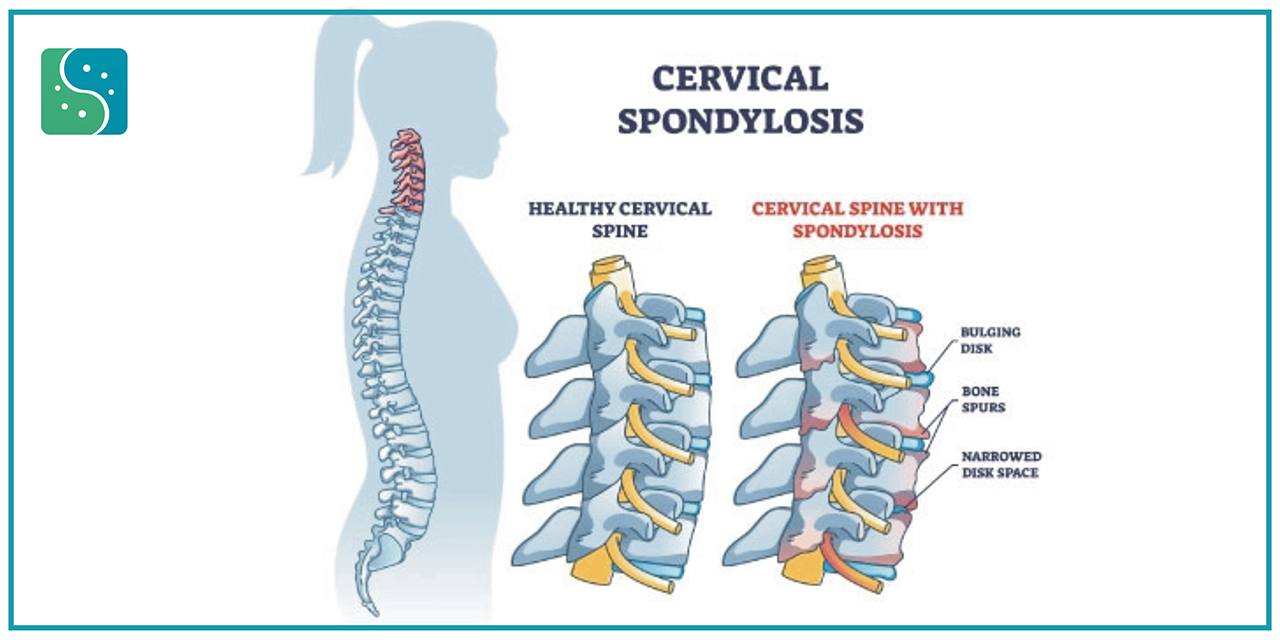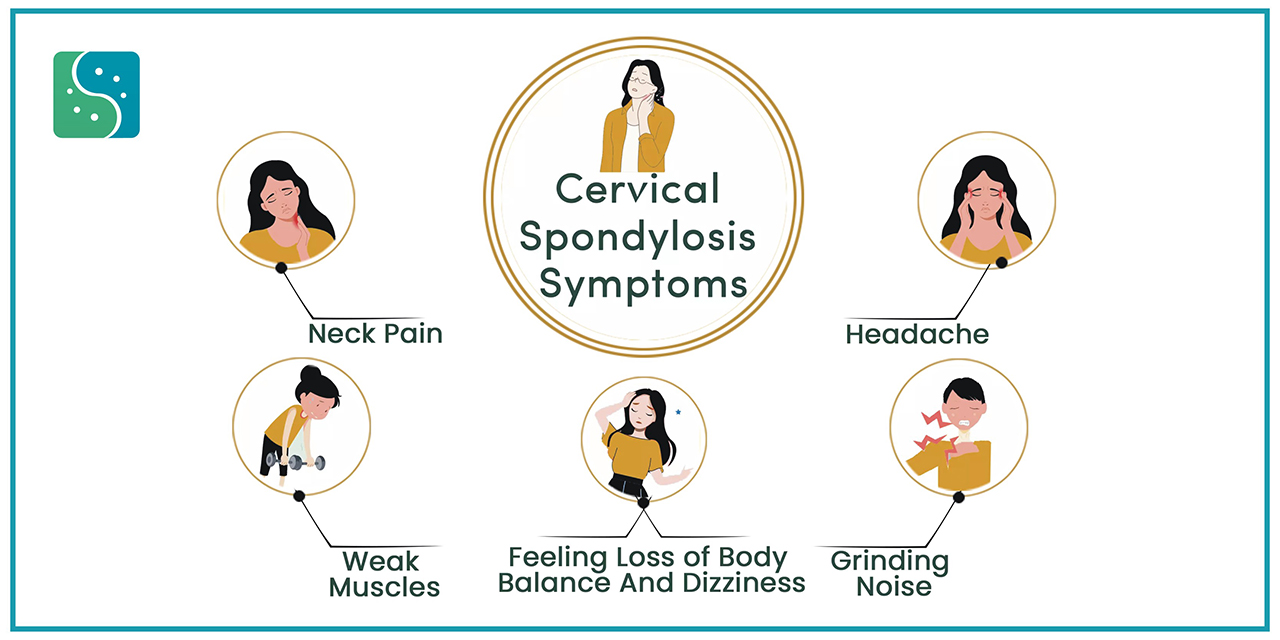Neck pain can be caused by many things but it is most often related to getting older. Like the rest of the body, the disks and joints in the neck (cervical spine) slowly degenerate as we age. Cervical spondylosis, commonly called arthritis of the neck, is the medical term for these age-related, wear-and-tear changes that occur over time.
HOMOEOPATHIC TREATMENT FOR CERVICAL SPONDYLOSIS
Homoeopathy has a lot to offer in the treatment of cervical spondylosis or neck pain. It not only relieves the spasm present in the neck and shoulder muscles but also strengthens the muscles. The medicines are selected as per individual symptoms and manage symptoms of pain, stiffness in neck, numbness/tingling in upper limbs and vertigo. These medicines also halt the further progression of the degenerative process in the spine from cervical spondylosis.
KNOW YOUR DISEASE
Cervical spondylosis is a general term for age-related wear and tear in the cervical spine (neck) that can lead to neck pain, neck stiffness and other symptoms. Sometimes this condition is called arthritis or osteoarthritis of the neck.
WHO IS MOST AT RISK FOR GETTING CERVICAL SPONDYLOSIS?
Older age is a risk factor for cervical spondylosis. In addition to age, you are more likely to experience neck pain or other symptoms related to cervical spondylosis if you.
- Smoke cigarettes or used to.
- Have one or more family members with this condition.
- Strain your neck often for your job, like looking overhead (for example, painters) or downward (plumbers or flooring installers) for many hours every day or keeping your head at an improper position for long periods of time (for example, staring at a computer screen that is too high or low).
- Have a previous neck injury, such as from a car accident.
- Do heavy lifting like construction workers
- Are exposed to a lot of vibration like bus or truck drivers.
CAUSES OF CERVICAL SPONDYLOSIS

As people age, the structures that make up the backbone and neck gradually develop wear and tear. These changes can include:
- Dehydrated disks. Disks act like cushions between the vertebrae of the spine. By the age of 40, most people's spinal disks begin drying out and shrinking. As the disks become smaller, there is more bone-on-bone contact between the vertebrae.
- Herniated disks. Cracks also appear on the exterior of the spinal disks. The soft interior of a disk can squeeze through these cracks. Sometimes, it presses on the spinal cord and nerve roots.
- Bone spurs. As the disks break down, the body may produce extra amounts of bone in a misguided effort to strengthen the spine. These bone spurs can sometimes pinch the spinal cord and nerve roots.
- Stiff ligaments. Ligaments are cords of tissue that connect bone to bone. Spinal ligaments can stiffen with age, making the neck less flexible.
COMMON SYMPTOMS OF CERVICAL SPONDYLOSIS

You may have cervical spondylosis and not even know it. It’s common to have no symptoms related to this condition. If you do experience symptoms, symptoms typically include.
- Neck pain or stiffness. This may be the main symptom. Pain may get worse when you move your neck.
- A nagging soreness in the neck.
- Muscle spasms.
- A clicking, popping or grinding sound when you move your neck.
- Dizziness.
- Headaches.
DIAGNOSIS OF CERVICAL SPONDYLOSIS
Physical examination
- Checking the range of motion in your neck
- Testing your reflexes and muscle strength to find out if there's pressure on your spinal nerves or spinal cord
- Watching you walk to see if spinal compression is affecting your gait
Imaging tests
Imaging tests can provide detailed information to guide diagnosis and treatment. Examples include:
- Neck X-ray An X-ray can show changes in the spine, such as bone spurs, that indicate cervical spondylosis. Neck X-ray can also rule out rare and more serious causes for neck pain and stiffness, such as tumors, cancer, infections or fractures.
- Magnetic resonance imaging (MRI). Using radio waves and a strong magnetic field, MRI can produce detailed images that can help pinpoint areas where nerves might be pinched.
- Computed tomography (CT) myelography. In this type of CT scan, a dye is injected into the spinal canal to provide more-detailed imaging. This test makes it easier to see the details of the spinal cord, spinal canal and nerve roots.
Nerve function tests
You may need tests to determine if nerve signals are traveling properly to your muscles. Nerve function tests include:
- Electromyography This test measures the electrical activity in your nerves as they transmit messages to your muscles when the muscles are contracting and at rest.
- erve conduction study Electrodes are attached to the skin above the nerve to be studied. A small shock is passed through the nerve to measure the strength and speed of nerve signals.
FREQUENTLY ASKED QUESTIONS
If your condition is mild, you can try a few things at home to treat it.
- Use a heating pad or a cold pack on your neck to provide pain relief for sore muscles.
- Exercise regularly to help you recover faster.
- Wear a soft neck brace or soft collar to get temporary relief. However, you shouldn’t wear a neck brace or collar for long periods of time because that can make your muscles weaker.
Radiculopathy is a pinching of a nerve at the nerve root. The nerve root is the first segment of nerve as it branches off of the spinal cord within the spinal column.

